Restoring Degraded Waters, One Pest at a Time
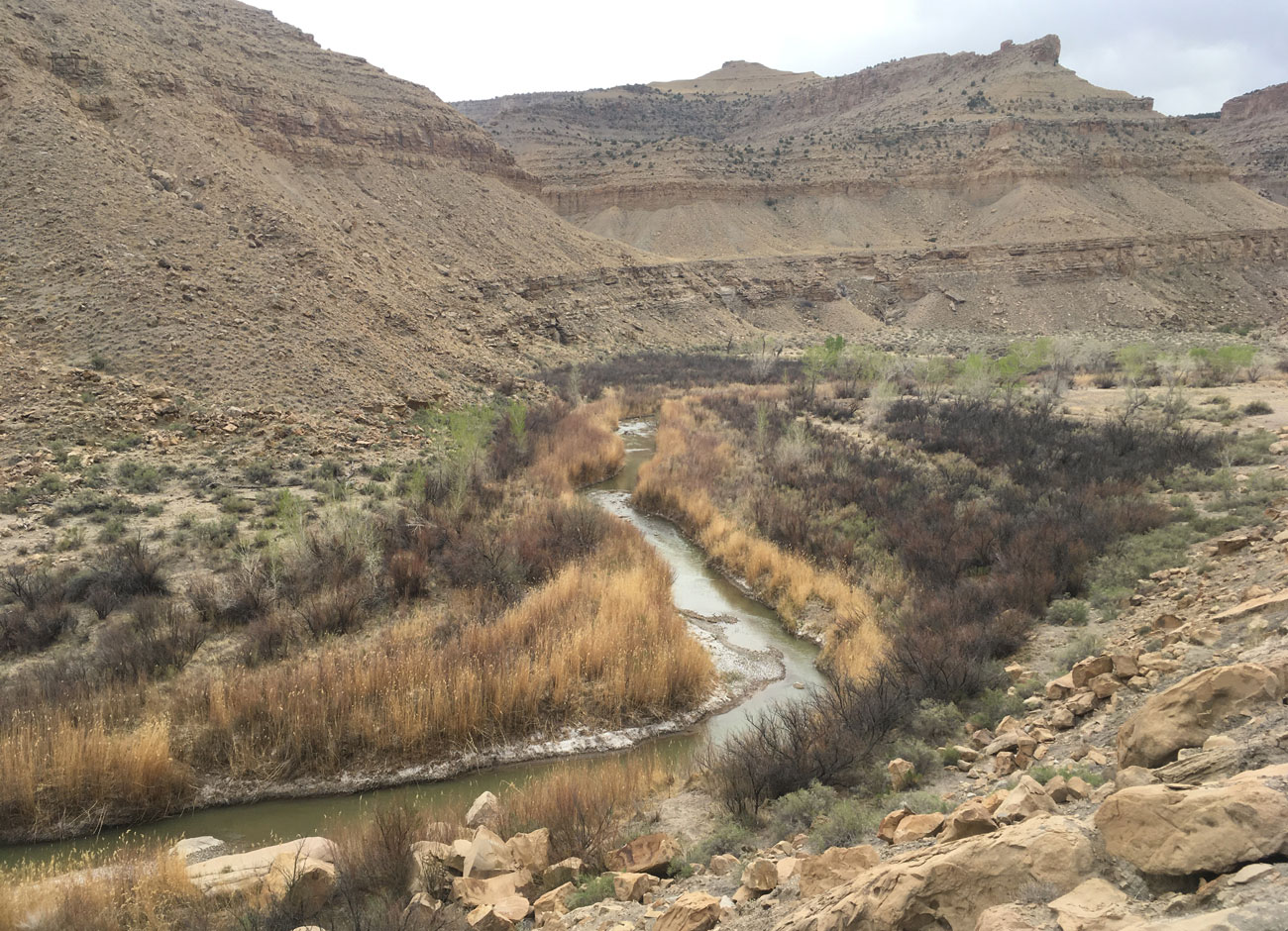
The desert rivers of southern Utah have geologic time etched along their banks.
Cathedrals of Wingate sandstone, 200 million years old, rise hundreds of feet above their turbid waters. These rivers have witnessed countless changes — big and small — from the rise and fall of dinosaurs to the appearance of the first tiny mammals skittering along the terrain. But human disturbances over the last century have fragmented and diminished these ancient waterways, decimating native fish populations that depend on them to survive.
A lot of these desert rivers, because they have lost water to reservoirs, dams, and diversion, no longer have the complex geomorphology– the pools and ripples – that fish populations need to spawn, feed, and to rest, explains Phaedra Budy Ph.D. ’96, professor watershed sciences at Utah State University. “They look like big irrigation ditches. The rivers are really simplified and degraded.”
Budy leads the USGS Utah Cooperative Fish and Wildlife Research Unit and has spent years trying to restore habitat for fish species on the Utah Sensitive Species List, such as roundtail chub, the bluehead sucker, and the flannelmouth sucker. Once abundant throughout the Colorado River Basin, these fish have disappeared from approximately half of their historic range, she says.
While the roundtail chub is considered a sport fish in some circles, the bluehead sucker and flannelmouth sucker are valued more for their roles as indicator species —a barometer of ecosystem health. And extended drought in Utah has only made a bad situation worse.
Last spring, a graduate student in Budy’s lab was stymied during an attempt to sample fish populations at research sites along the San Rafael River.
“Large areas were completely dry,” she explains.
No water, no fish.
A furry intervention
Most people can tell you that beavers build dams. But that is often where education about these riparian rodents stops. While their proclivity for felling trees and stoppering creeks may only become noteworthy when it floods a roadway, blockades culverts, or inadvertently cuts powerlines, in the desert these activities may prove pivotal in the effort to salvage declining fish populations.
Budy suspects boosting beaver colonies, which are native to these desert waterways, could mimic small flooding events by building dams that back up water and fan it across floodplains. In a world primed for efficiency, in the desert, sluggish streams may hold the key to restoring habitat.

“It’s pretty experimental,” Budy admits. “We are learning, so we will adapt the project along the way.”
The idea of using beaver to rehabilitate western forests, rivers, and wetlands is not new. It was a practice the U.S. Forest Service introduced in some western forests in the 1940s, but was never widespread. Budy’s colleagues in the S.J. Quinney College of Natural Resources, Joe Wheaton and Nick Bouwes, professors of watershed science, spent the last decade refining the technique by developing beaver dam analogs (BDAs) – a rustic-looking latticework of wooden beams and branches assembled in streams – to give the furry engineers starter kits upon introduction to new waters. They are low-tech by design to keep costs low and restoration scalable so nature can reclaim its course.
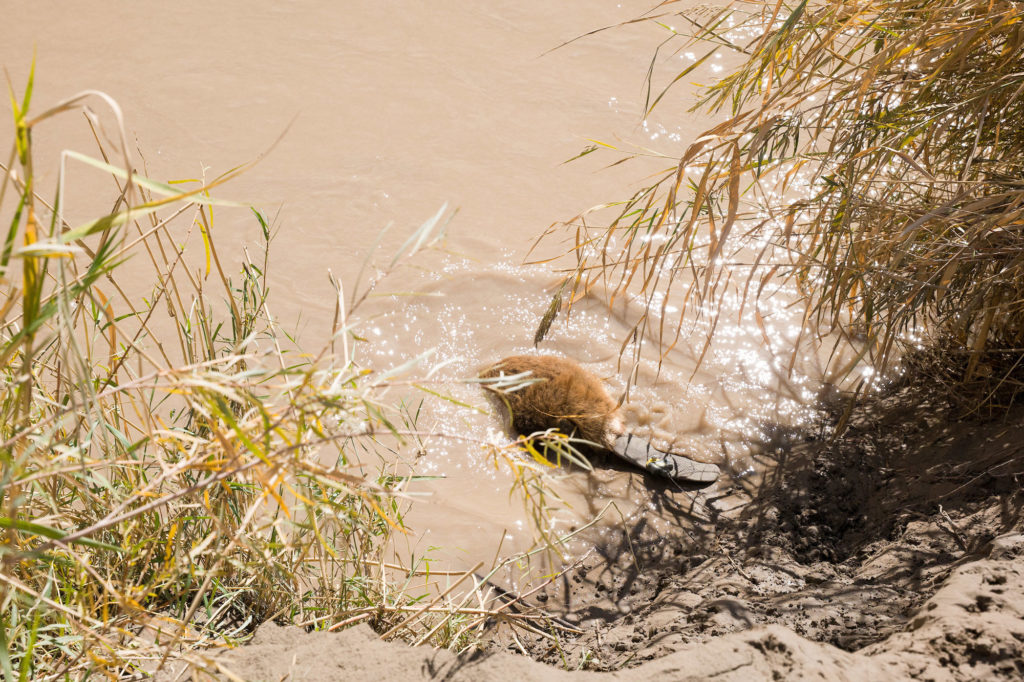
The method is called low tech process-based restoration because it restores function to a degraded landscape through natural processes. However, working in Utah’s deserts requires overcoming a special set of challenges. For one, monsoon season brings heavy floods capable of knocking out the human (and beaver) made structures.
But for Budy, that’s not necessarily a bad thing.
“When they blow out, that is also creating habitat,” she says. “[Debris] can collect on the shore, which fish really like.”
But testing where and if the BDAs and beavers improve riparian habitat involves collaboration between the Bureau of Land Management, the Bureau of Reclamation, Utah’s Division of Wildlife Resources, U.S. Department of Agriculture-National Wildlife Research Center, multiple USU research teams, and organizations like Anabranch Solutions and USU’s Beaver Ecology and Relocation Center, which live trap “nuisance” beaver slated for removal.
“There are still a lot of people, and I would say most people, who consider beavers a nuisance,” says Nate Norman, a wetland biologist at the center. “And they do cause problems when they are in the wrong locations.”
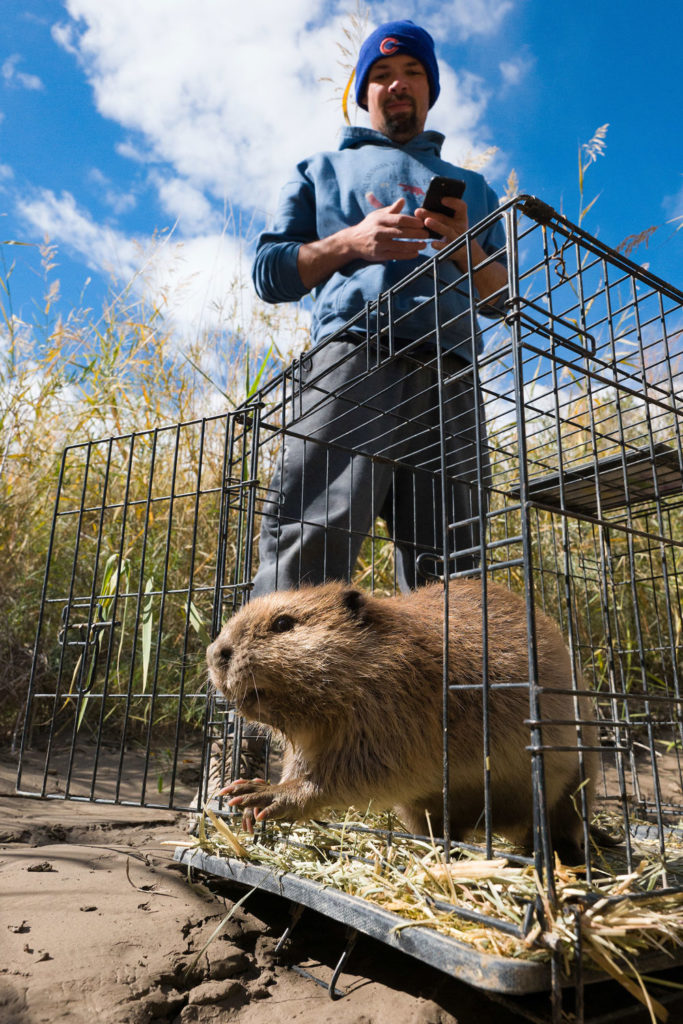
Beaver make a mess of their surroundings. They scatter trees, branches, and mud across streams, reducing flows which can produce beneficial effects downstream by inadvertently creating storage pools and expand wetland habitat for other wildlife.
And ranchers and owners of large swaths of western lands have noticed. These groups, Norman says, are where the researchers have seen shifts in attitudes concerning beavers. One Idaho rancher in particular, Jay Wilde, worked with Wheaton and Bouwes to install BDAs on his property and educates other ranchers about the role beavers played in keeping water in his streams longer during the summer months when flows typically dry up.
“Through word of mouth, other ranchers are figuring out about the successes they’ve been having,” Norman says.
Beavers are considered a furbearing population in Utah, meaning the population is regulated by the state because of the value associated with their pelts. The fur trade is largely why beaver populations plummeted across North America from the 1600s onward as trappers sent pelts to Europe for the fashion industry. And their population has never fully recovered.
In Utah, when beaver activities cause problems such as flooding basements or damming culverts, residents can apply for their removal with UDWR. Typically, this is a fatal process. Norman’s team works with UDWR to let residents know there is another option: live trapping.
“I just want to get the word out about what the options are, and about what beavers can do,” he says. “Beavers belong, too.”
As a wetland biologist, Norman knew how beavers created wetlands, but other aspects like how their behavior shapes water storage and habitat for other wildlife was less clear. Once he learned about the benefits, he became passionate about safely deploying beavers to degraded riverways. Over the last three years, Norman’s group has helped trap and release more than 200 beaver across Utah. But that isn’t a surefire path to freedom.
“Moving is a very dangerous activity for beavers,” he explains, particularly, when they are in a new area. “They are a really mild-mannered animal but that doesn’t work out for them, in general, in the wild.”
Beaver are “walking sausages” for predators, he says. And they are a veritable feast. Typically, weighing between 20 to 50 pounds, beavers are slow moving on land, waddling like a diver wearing fins on a pool deck.
Julie Young Ph.D. ‘06, a behavioral ecologist and the Supervisory Research Wildlife Biologist for the USDA-NWRC-Predator Research Facility in Millville, got involved in the project to give translocated beaver a better chance of survival. Because while the idea of moving beavers to improve watersheds is not new, learning what happens to them afterwards is less understood.
“Are we going to put them out there and they’re just going to become food for what’s out there?” she asks.
And if they don’t automatically become a meal, how do researchers prevent beavers from leaving their new home? Two of Young’s USU master’s students are investigating how to increase beaver survival rates and keep them in the watersheds where they are needed most.
Reducing risks to beaver
In spring 2019, Emma Doden MS ‘21, began the first two years of the experiment tagging dozens of nuisance beavers with sensors to track their movement before releasing them along stretches of the San Rafael and Price rivers. What happened next is still somewhat unknown.
While some tags failed, some beavers wandered away from the restoration sites and avoided detection. A few others—a higher proportion than resident beavers—wound up as lunch. Drought could have done in a few more. Doden translocated 47 beavers in total and the survival rate was just under 40 percent compared to about 80 percent of resident beavers, Young says. “It’s still a better outcome—it’s 40 percent that didn’t get shot.”
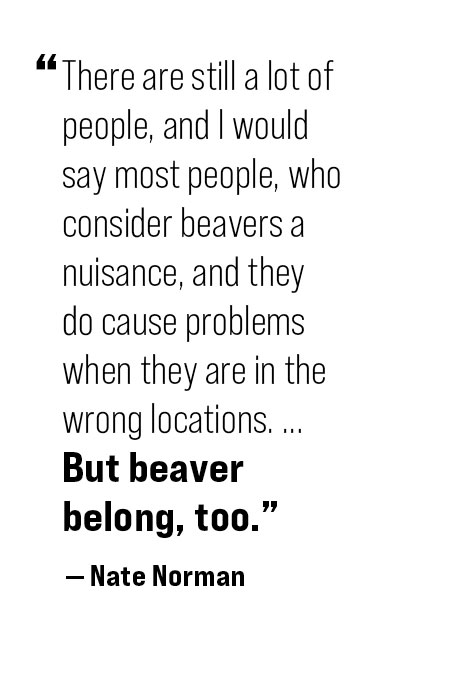
Doden also found evidence of new dam-building and maintenance at the sites, and that adults are more likely to remain at the target sites than younger beavers. One theory is that when translocated beavers are introduced to new sites where analog dams are present, they may offer some initial cover from predators and encourage beavers to stay and fix up the place.
Additional research suggests moving a family of beavers instead of an individual animal may encourage them to actually settle at new sites, Norman says. Whenever he can, he tries to live trap and remove entire families. Afterward the beavers spend three days in quarantine at USU’s Beaver Ecology and Relocation Center to protect against transmitting aquatic diseases into new watersheds. It’s also where Christine Sandbach, a first-year master’s student in ecology who inherited the project from Doden, studies beaver behavior to determine if some traits are better predictors of survival.
“Are there bolder individuals who might take more risks once they are released?” she asks. “And are they going to do better or worse in the system?”
But how exactly does one measure boldness in a rodent?
For Sandbach it involves two tests. In the first, researchers rate an animal’s aggressiveness after every interaction. The second is referred to as the novel object test. On the third night of quarantine, she explains, researchers introduce a new object into the enclosure and time how long it takes for a beaver to approach and explore it, which in the wild, could potentially pose a threat.
“I was drawn to this position because I liked how applied it was,” Sandbach says. “It seemed like my work might really make a difference in the system. It wasn’t just collecting data and seeing what happens. It was actively taking part in a restoration project.”
Her project marks phase two of the ongoing experiment. In the spring, 75 BDAs were added to a 5-kilometer stretch of the Price River to see if and how they affect both the translocated beaver and threatened fish populations. In 2021, Sandbach translocated 26 beavers to the Price River, six of which were killed by predators—a higher proportion than resident beavers, and a potential uptick over the first wave of nuisance beavers released.
“The ultimate goal of my project is to see if we can use beavers as a tool for desert stream restoration,” she says. “Beavers are a classic example of ecosystem engineers. Can we use nuisance beavers to supplement the population down there? And hopefully, build dams and specifically improve habitat for these three imperiled fish species that live on the Price River.”
In late October, she drove to Price to collect water measurements and pull traps for the last time until spring 2022 when she will revisit the sites and potentially expand into the San Rafael River. That is, if there is enough water.
“When I tell people I am in this field and what I am doing, people just have no idea that things like this are going on in the world,” Sandbach says. “It is kind of cool to explain that there are these restoration projects and people working full-time to restore habitat.”
A wake-up call
One of those people is Wally Macfarlane ‘96.
He uses Geographic Information Systems to understand a riverscape’s history and health. He conducted spatial data analysis of the desert ecosystem as part of a restoration and monitoring plan. He created orthomaps to pinpoint where stream restoration might be most effective. The restoration plan involved concentrating BDAs along a 3-mile stretch of the Price River.
“It’s this idea of strength in numbers,” Macfarlane says.
The winnowing of the river produces an effect much like holding one’s thumb over a garden hose. As the force of the water increases, so does the likelihood that BDAs and beaver dams will get washed away in storms.
We know some of the BDAs will get blown out by flooding, Macfarlane explains, but some will survive. The structures that do break will send material downstream that intertwines with other BDAs, creating potentially bigger snags in the river. The research team monitors how the BDAs change over time and sample fish populations to determine, if and how, they were affected by the structures.
“One thing to consider is that building them is just part of it,” Macfarlane says. “Then we rely on the stream. We let the stream do the work. That is why we call it process-based restoration. Because as the flows come in and interact with these structures and rework them, that is where we get the real gains—especially in these sandy and easily erodible systems.”
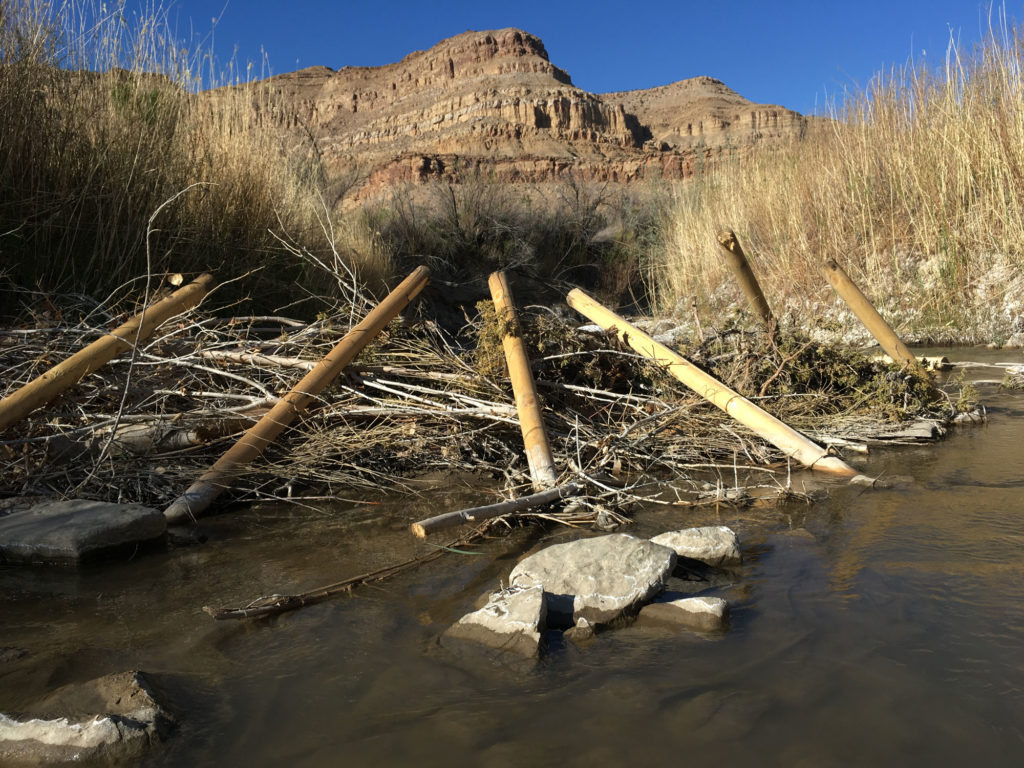
The Price River is a trickle of what it once was. Historical images taken by the United States Geological Survey in the 1930s show a meandering riverbed about 100 feet wide whereas today’s Price River is incised and only about 20 feet across. The system has also lost anabranches—smaller offshoots of rivers that wind away and back again—which add complexity fish need in an otherwise homogenous flow.
The San Rafael is in even worse shape. Some years, sections of the river have completely dried up.
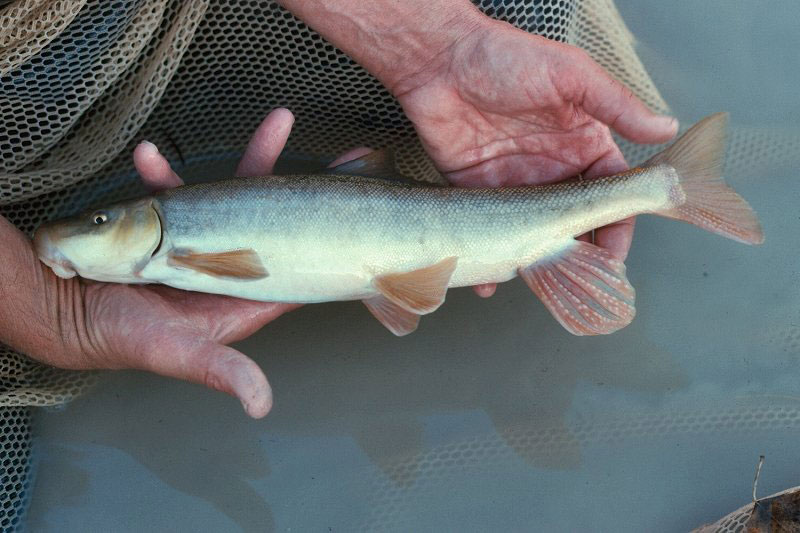
While a significant monsoon season dumped water into a parched river system, the last three years were “dismal,” Macfarlane says. “With climate change, drying up, dewatered rivers, unfortunately, this is going to be the new norm. It’s a scary proposition.”
This may be where BDAs and beavers can make a difference. Macfarlane recently sent images of the BDAs to curious BLM managers wanting to see if the BDAs were creating a refugia for fish populations.
“Sure enough, there is water behind those structures,” he says.
While sampling is still ongoing, Macfarlane doesn’t have to look far to see what restoration of the system could look like. In 2010, a large flash flood in a tributary of the San Rafael dammed the river, creating a vast wetland for miles upstream that continues to support migratory birds, waterfowl, and fish. That not only creates valuable habitat for wildlife, it could save money, too.
Each of these endangered fish are heavily monitored, Macfarlane explains. “So, if you save any of these endangered fish, you are saving resources in agencies throughout the West. This type of [restoration] work really is kind of a drop in the bucket in comparison.”
But it’s too early to declare victory. The evidence, beyond anecdotes from the field that the displaced beavers are established and taking over dam-building, isn’t quite there yet.
“They picked a difficult area,” Macfarlane explains. “They want to see how beaver can do in these marginal areas. And it’s marginal for dam-building beaver for a couple of reasons.”
Obviously, the desert is a harsh environment. When dewatering occurs, beavers are vulnerable to predation. Beavers in alpine regions build dams and store food caches in rivers that freeze. In the southern desert, they may not need to build dams, he adds.
The study tests the limits of BDAs and translocated beavers in more extreme environments. Because BDAs, while a comparatively low-cost restoration method, do involve labor and material expenses. The flashiness of desert rivers may wipe out these savings.
“There are some inherent risks there as far as how much you can lose,” Macfarlane says. “That is why it is so interesting to research things that are on the fringe here. It makes you more critical, and it makes you think harder about what you are doing, rather than always thinking ‘here is a silver bullet’ and patting yourself on the back.”
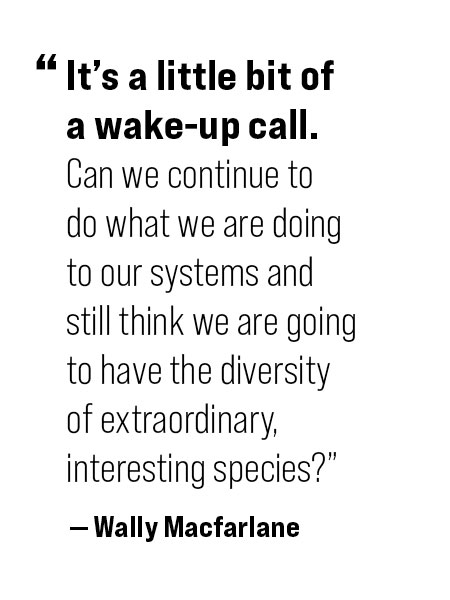
The questions students in Budy and Young’s labs are asking define what success looks like in desert stream restoration. What they uncover may help water managers decide how much risk they can afford to take.
“It’s kind of a cautionary tale,” Macfarlane says. “I am not saying that it can’t be done here and that it won’t work, but it is more risky. For me, the most important thing about getting the beaver to stick around is that is the sustainable way of keeping these structures or this habitat in play.”
Because beaver don’t take blowouts personally. They don’t calculate their losses. They just rebuild. It’s what they do.
“At the end of the day, what we really care about in this project are the fish and the fish data is going to be important,” Macfarlane says. “What we have shown in other areas is even when these structures are blown out, they provide diversity in habitat and fish are found around them.”
Sometimes it’s hard to be optimistic about the future of western waters. They are under constant pressure as demand rises for less and less water. When the Colorado River Compact was signed in 1922, water allotments for seven states were made during a particularly wet period. In the century since, millions more people are pulling from a shrinking pool made worse by climate change.
“It’s almost like triage,” Macfarlane says. “It’s like any fish that we can save is good. Because these important fish are blinking out.”
“These species, they have been around forever,” he says. “It’s a little bit of a wake-up call. Can we continue to do what we are doing to our systems and still think we are going to have the diversity of extraordinary, interesting species?”
Macfarlane has seen the losses accumulate. And it’s heartbreaking.
“We lose the cool species,” he says. “I have studied forests like whitebark pine forests—we are losing those. We are losing coral reefs. We are losing these exceptional fish species that appear prehistoric.”
Fish like the bluehead sucker. When lifted from a stream, the fish sparkle gold in the sunlight. During spawning season, the males shimmer red with steel blue heads. Macfarlane has witnessed them spawning in Calf Creek Falls in Escalante Creek in water just a few inches deep.
“That is as close to a dinosaur that I have seen,” he says. “It’s really magnificent and flashy, and wow, that is worth keeping around.”







Lise Brunhart December 16, 2021
Thanks for at least TRYING to get the BDAs to work is Price River !!
This is a great article!!
I love the example you cited of the flash flood debris creating a spontaneous wetland…..we need more of these !